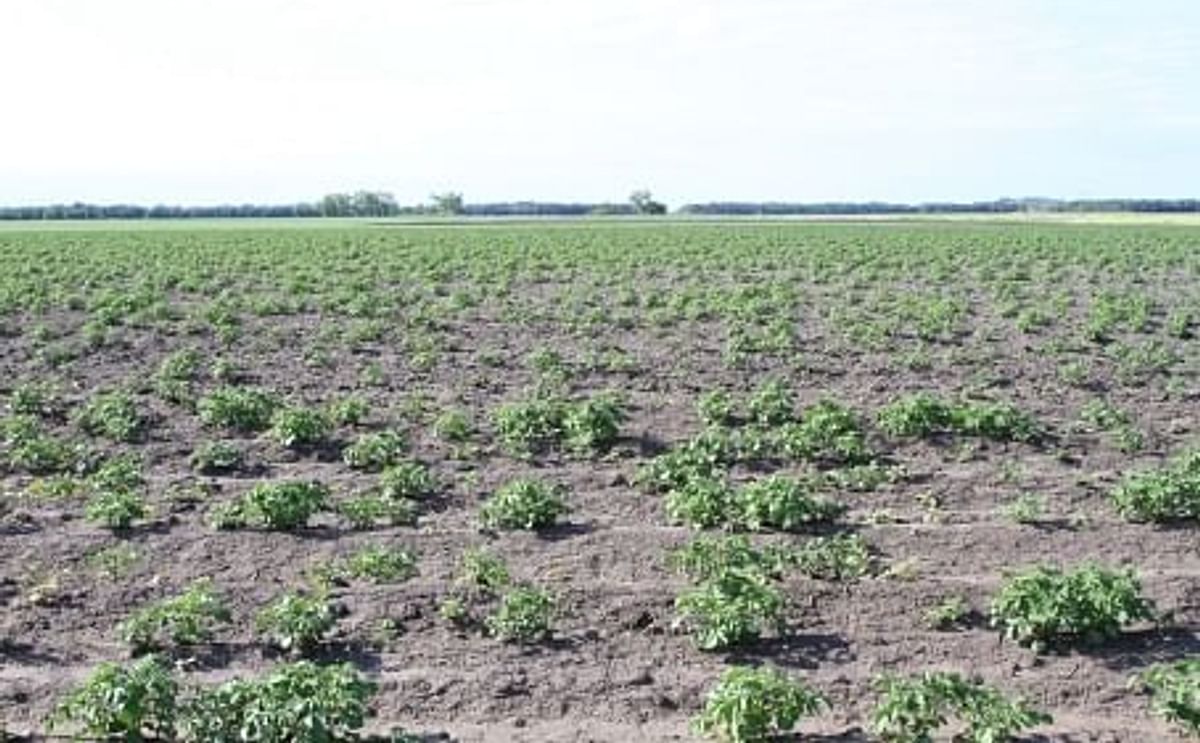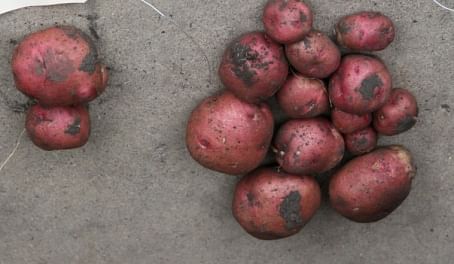Poor emergence of seed potatoes with glyphosate residue
Use caution when spraying glyphosate near seed potatoes

A small amount of glyphosate drifting into a seed potato field can cause thousands of dollars of damage.
Seed potato plants exposed to low levels of the herbicide glyphosate this year can damage next year’s seed significantly, according to Andy Robinson, North Dakota State University and University of Minnesota Extension potato agronomist.
“When seed potatoes uptake small quantities of glyphosate, the glyphosate will translocate to the tubers, so when planted next year, they may not emerge, have delayed emergence or have malformed shoots,” Robinson says. “This will result in shoots being more susceptible to diseases, a delay in canopy closure, and reduced yield and quality. Potato plants that have glyphosate residues in the seed had a 63 percent reduction in yield when they were delayed in emergence by approximately three weeks.”

Yield reduction as a result of exposure of seed potatoes to glyphosate (left) compared to reference (right)
At this time of year, many acres of small grains receive a preharvest treatment of glyphosate. This also is the time when potatoes are the most susceptible to glyphosate, so a small amount of glyphosate drifting into a seed potato field can cause thousands of dollars of damage.
Seed potatoes are worth approximately $4,000 an acre. One acre of seed potatoes will yield enough to plant 10 acres the next year, making the value approximately $40,000.
Related "Focus on potato"webcast: Effect of Glyphosate on Potatoes (Open access until August 31, 2013)
“With that in mind, producers and others should use caution when spraying fields with glyphosate next to seed potato fields,” Robinson says. “Communicate with your neighbors to let them know you will be spraying. Spray only when the wind is blowing away from the potatoes, and leave a border.”
Source: North Dakota State University Extension Service






